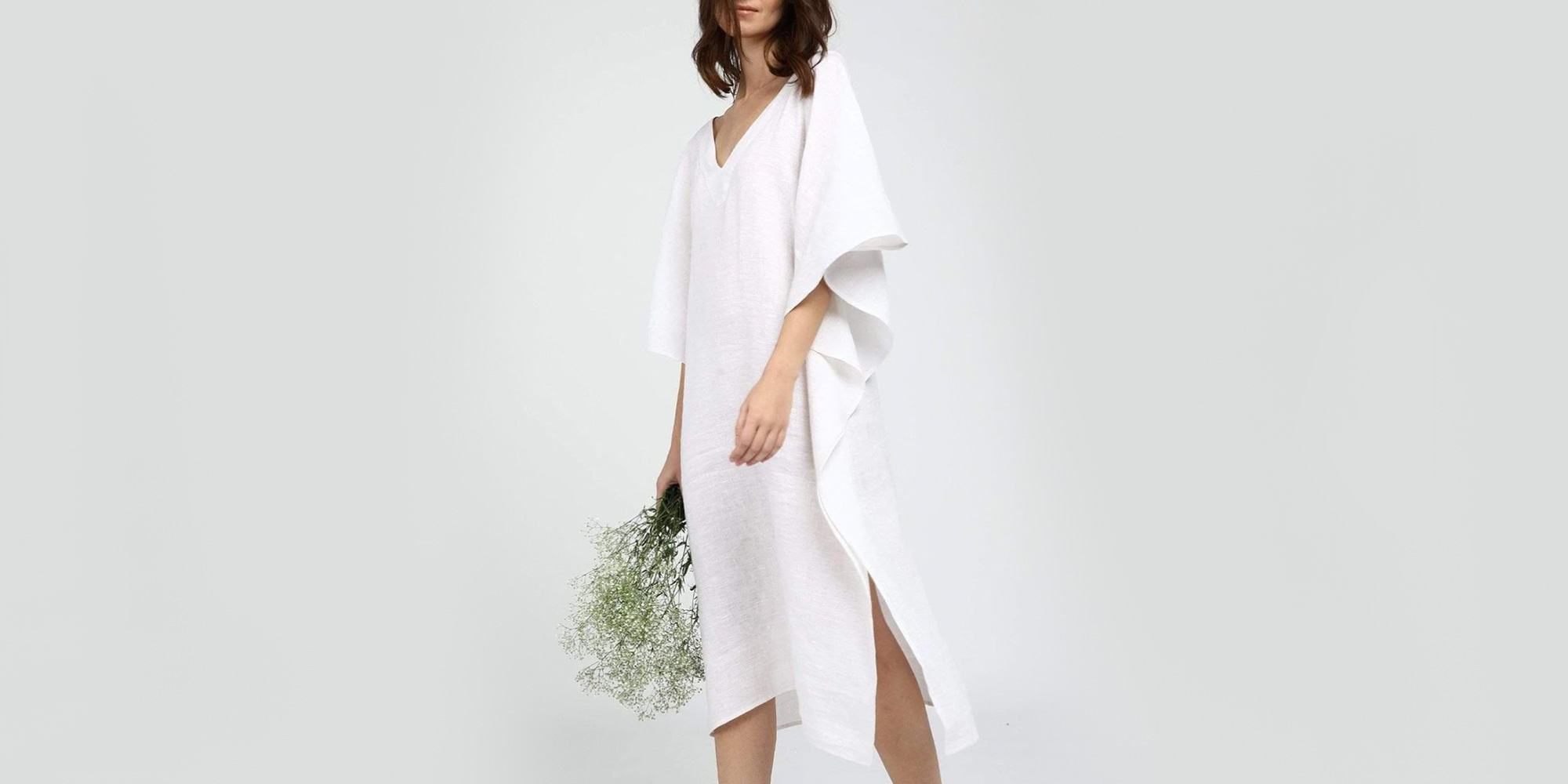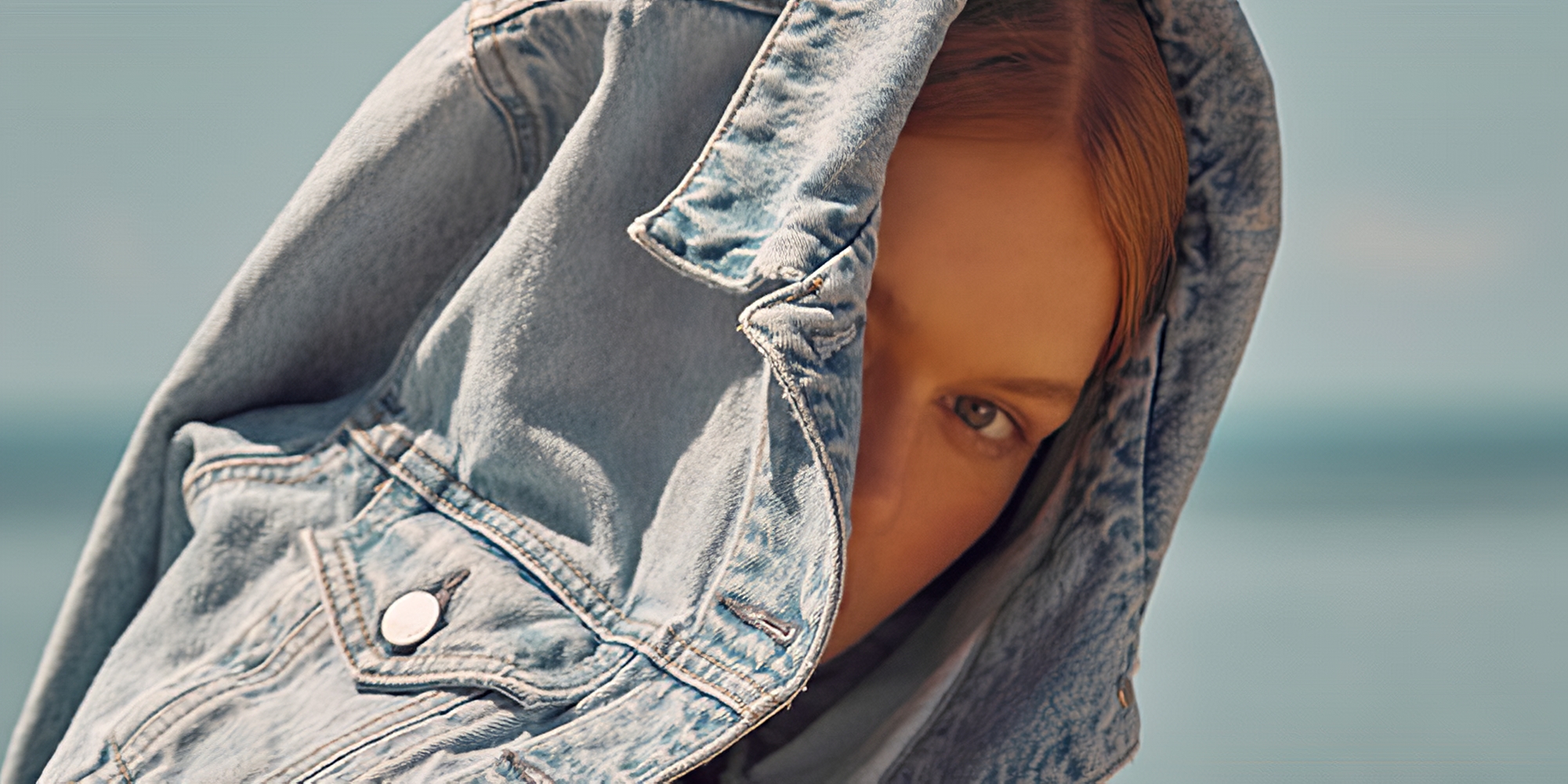Our editors curate highly rated brands that are first assessed by our rigorous ratings system. Buying through our links may earn us a commission—supporting the work we do. Learn more.
Linen is the luxurious fabric you want to wear every time summer rolls around, or spread across your bed year-round. But the big question remains: how sustainable is linen? Rest assured, we have some interesting news for #linenlovers. This is one lower-impact fabric it’s well worth investing in from your bed to your closet.
Linen lovers unite
Linen is one of the most biodegradable and stylish fabrics in fashion history. It’s strong, quick-drying, naturally moth resistant, and made from flax plant fibres, so when untreated (ie not dyed) it is fully biodegradable. Its naturally-occurring colours include ivory, ecru, tan, and grey.
Linen can withstand high temperatures—making the fabric ideal for raiding the jungle or lounging on a tropical island. It also absorbs moisture without holding bacteria. In fact, it is actually stronger when wet than dry and becomes softer and more pliable the more it is washed. It basically ages like a fine wine.
But what exactly is linen fabric, how is it made, and is it a more sustainable option than other materials in fashion? Let’s take a look.
Linen is older than you think
All the characteristics of linen have lead many European cultures to form traditions of handing down linen bed sheets as heirlooms. Unlike cotton, linen that’s been well cared for can last for up to three decades. It’s one of the oldest fibres known, dating back at least 36,000 years. The Egyptians used it as currency, and it formed an integral part of the mummifying process. At one point it was even used in a form of battle armour called Linothorax.
Linen is used in a variety of ways, its sturdiness making it ideal for upholstery and industrial products. Curtains, tablecloths, bed sheets, and tea towels are all common linen items found in the home. Linen has also been used as canvas for oil paintings, by artisan bakers, and even as part of the material that makes up the American dollar bill. In contrast, linen can also be woven to a soft and breezy finish, making it ideal for your summer wardrobe.
These days, linen is mostly produced in China for clothing and in the US for homewares, however, as Sewport highlights, “the production of high-quality linen products remains an important part of the cultures of many European countries, and Ireland, Italy, and Belgium remain significant linen producers.”
How is linen fabric made?

Linen is made from the inner stalk fibres of the flax plant—yes, that very same flax you might sprinkle on your breakfast. According to Sewport, the plant goes through nine stages—from planting through to drying—before it becomes the yarn that turns into the breezy fabric we know and love. It is quite a laborious and time-intensive processes, hence the higher price tag.
Is linen a lower-impact option?
Like every material, linen production has good and bad points for both workers and the environment. Here are some of the most important points to consider when deciding whether linen is a fabric you want to invest in.
The pros
Flax is extremely versatile. Every part of the flax plant has traditionally been used to create a worthwhile product—nothing is wasted, and production is cost effective. A common by-product of flax is linseed oil, which is great for wood preservation, especially in varnishes, and flaxseed oil is also rich in omega-3.
Flax is resilient and can grow in poor soil, using far less water in its consumption than cotton. According to the European Confederation of Linen and Hemp, “Across its lifecycle, a linen shirt uses 6.4 litres of water” compared to thousands of litres for a cotton shirt.
The United Nations Food and Agriculture Organisation state that flax uses 13 times less pesticides than potatoes, but is only approximately 1% of the world’s apparel fibre consumption. But why is this the case?
The Truth About Thread Count explains:
Because of the laborious time it takes to produce linen yarn, and the manual processes that have to be undertaken, linen has become a higher-priced commodity and considered among many to be a ‘luxury’ fabric.
The cons
The area of most concern both for the surrounding environment and its human population is the chemical-driven retting process. Alkali or oxalic acid are normally used, which are toxic in relatively low concentrations. This can be avoided entirely if manufacturers opt for water retting instead, a common feature of certified organic linen. This process is much less cost-effective, however, hence the higher price point on organic garments.
In addition, because of the dense nature of the fibre, to get a pure white linen, it has to go through a heavy bleaching process. Sticking to its natural-toned hues will ensure a more environmentally-friendly garment afterlife. Dyes can also be problematic: if you buy non-organic linen, there is no guarantee that no harmful dyes have been used.
Although linen doesn’t technically need much fertiliser or pesticides, that doesn’t mean they’re never used. In fact, most non-organic flax is grown using nitrates. Excess nitrates can get into water streams and harm our ecosystems. On the pesticides front, linen usually needs less than other crops, but again, unless the linen brand or product is certified organic (the good news is that the Global Organic Textile Standard also applies to linen), there’s no guarantee no harmful pesticides have been used.
Finally, we have to acknowledge that while linen (especially organic linen) may be environmentally sound, forced and underpaid labour is still extremely common for the millions of garment workers around the world, so unless a brand specifies that they pay living wages or have other labour rights initiatives in place, there’s no guarantee the hands that planted, grew, harvested, processed, spun, and sewed the linen fibres were treated right.
Linen in daily use
Linen can become crinkled easily. Sometimes all you have to do is look at it, and it crinkles. Ironing vigilance is necessary unless you decide to embrace the rumpled look with blasé confidence, which can also work. However, you should be aware that a constant creasing in the same areas can lead to tearing in the material, and colour fading.
As a luxurious fabric, linen is also typically more expensive than comparable fabrics like cotton. However, investing in a high-quality linen garment that has been made to stand the test of time means that the cost-per-wear will be greatly reduced, so it just means a higher up-front cost which may or may not work for everyone.
In short, if you want to invest in the best lower-impact linen, look for organic certifications or for brands that trace the product all the way back to the crop, be prepared to fork out a little extra cash for your items, and learn to care for your linen to get the most of out of it for many seasons to come.
Overall, linen is a winner
Linen gets our vote because it’s durable, can be made more sustainably than most other materials, and—bonus—it makes you feel like you’re on a yacht in the Mediterranean when you’re wearing it. In our Ultimate Material Guide, we rank organic linen at the top with “Your best bets”, and even regular linen gets a spot in our list of “Third bests”.
Linen is one of the least environmentally damaging textiles. “Unlike synthetic textiles, natural fabrics like linen are biodegradable, which means that their constituent molecules reabsorb into the surrounding environment within a matter of years instead of centuries,” explains Sewport. “Natural fibres also don’t contribute to the ongoing micro[plastic] pollution crisis in the hydrosphere, which threatens aquatic and human life.”
Time to invest in some linen?
These brands have some great linen lines worth checking out.



























